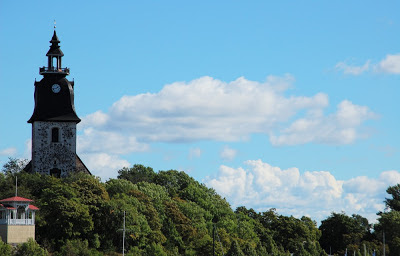If you are concerned about your photography, if you want to take engaging, artistically inspiring photos, you probably are anxious to know a) whether your photos are snapshots or not; b) if they, alas, are, how to break free of the dreaded snapshot circle. Let me congratulate you, you've come to the right place!
 |
| As typical a snapshot as it can be. A few people might see some story (and hence artistic merit) in this image, but I would expect most people to simply call it "nice" and move on. |
What is art?
Obviously enough, in order for a photo to have artistic merit, we must know what we're talking about. Art is notoriously subjective, and what else could it be, since we refer to the expression of one's inner thoughts and emotions. These may or may not evoke similar responses from audiences. Indeed, in one sense, a work of art will never be appreciated exactly the same by two different people - or even by the same person in two different occasions.
Still, although art is subjective, certain patterns can be traced; a consensus of sorts can be reached regarding the artistic merit of a given work. In very general terms, the more emotional response an artwork can inspire, the "better" it is - in the sense, that it fulfills the role art possesses in our lives. You may hate a photo. But this is better than feeling indifference.
So, what is a snapshot?
A snapshot is a photo that does not inspire emotions; a photo that does not tell a story. It might be an interesting photo, still. It might be an image with vivid colors, an image displaying an attractive vista. But if it is not anyhow different than any other similar image, if it does not describe something about its subject, then it is a snapshot. Perhaps a beautiful one, but still a snapshot.
"How will my photos stop being snapshots?"
That is of course the most important aspect. The difference between a snapshot and a work of art is that the latter has a story to tell. Better still, it should be a story not told before, at least not the same way. A work of art should have something to say and it should be original.
In order for a photo to have a story, you must have one to tell.
- Why are you taking this photo? What kind of emotions and thoughts went through your mind?
- How are you planning to convey these emotions and thoughts? All visual aspects, such as composition elements (read my composition series if you haven't done so yet), colors, shapes, tones, they all have to be taken into consideration. Also invisible elements are important: if you expect to see something and you don't, that tells a story.
In order for the story to be as original and unique as possible, it must be told in ways that are unique.
- positioning and perspective are the key here. The trick - which comes only through experience - is to find the magic balance between something audiences can relate to and something that is fresh and unique. If it's too unique, audiences will not be able to accept it.
- Post-Production considerations: Subtlety is the key here. The manipulation should be enough to create a differentiation and to support your artistic vision, but not too excessive, as, again, the viewers will dismiss it. Of course, whether you care for that or not is a wholly different subject. I would prefer to have taken an image the whole world hates but I love, rather than an image everyone loves but I hate.



No comments:
Post a Comment